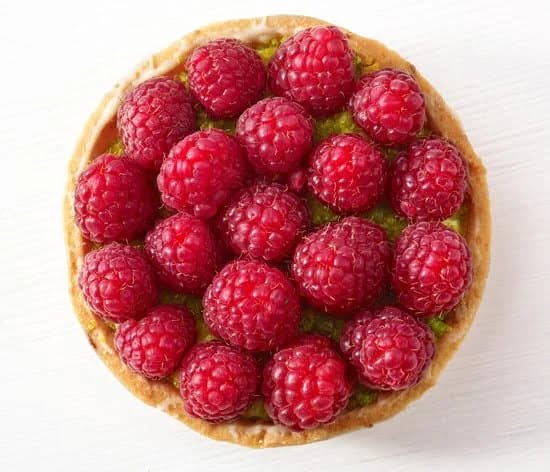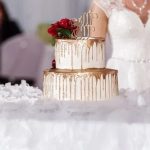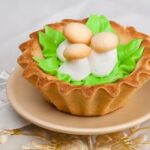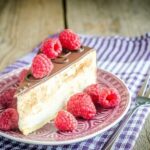The sweet and colorful world of candy has found its way onto cakes, becoming a popular trend in cake decorating. From birthdays to weddings and holidays, candy decorations have become a creative and vibrant way to add flair to any celebration. This article will explore the art of using candy as a decorative element for cakes, providing insights into the types of candy that can be used, techniques for applying them, and tips for creating visually stunning designs.
When it comes to decorating cakes with candy, the options are endless. Gummy candies, chocolates, lollipops, sprinkles, and more can be utilized to add texture and flavor to your cake creations.
Choosing the right type of candy based on the theme and style of the cake is essential for achieving the desired effect. Whether you’re aiming for a whimsical and playful design or an elegant and sophisticated look, the selection of candy plays a crucial role in bringing your vision to life.
In this article, we will delve into various techniques for applying candy decorations onto cakes, providing a step-by-step guide on how to effectively arrange and secure them without causing damage. Additionally, we’ll explore inspirational ideas for creating eye-catching designs using candy, as well as common mistakes to avoid when using candy for cake decoration. Get ready to embark on a sweet journey into the delectable world of candy decorating for cakes.
Types of Candy for Cake Decorating
When it comes to decorating cakes, the options are nearly endless, and one of the most popular choices for adding color and flair is using candy. Whether you’re celebrating a birthday, wedding, or holiday, candy decorations can provide a creative and eye-catching element to your cake. From gummy candies to chocolate, lollipops, sprinkles, and more, there are various types of candy that can be used to adorn cakes and take them to the next level.
Gummy candies are a versatile option for cake decorating, as they come in a wide range of shapes, sizes, and flavors. They can be used to create fun and whimsical designs on cakes and add a pop of color. Chocolate is another classic choice for decorating cakes, whether it’s in the form of chocolate shavings or curls, chocolate-covered fruits or nuts, or even small chocolate bars strategically placed on top of the cake.
Lollipops not only make great standalone decorations for cakes but also serve as fun and edible cake toppers. Sprinkles are perhaps one of the most common choices for adding a touch of color and texture to cakes.
When choosing the right candy for decorating a cake, consider the theme and style of the cake you’re working with. For example, if you’re creating a whimsical and playful birthday cake, gummy candies and lollipops can add a fun element.
For an elegant wedding cake, delicate chocolate curls or edible metallic pearls could be the perfect choice. Ultimately, the goal is to select candy that complements the overall design of the cake while adding visual appeal and delicious flavor.
Techniques for Applying Candy Decorations
Applying candy decorations to cakes can be a fun and creative way to add a pop of color and unique texture. Whether you’re decorating a birthday cake, wedding cake, or holiday dessert, using candy can take your creation to the next level. In this section, we will discuss some effective techniques for applying candy decorations to cakes and provide tips on how to arrange and secure them without causing damage.
Step-by-Step Guide
When it comes to applying candy decorations to cakes, it’s important to have a plan in place. Start by outlining where you want the candy to go on the cake. You can use edible glue or frosting as a “glue” to attach the candy securely. For larger candies such as lollipops or chocolate bars, consider using toothpicks or skewers to help anchor them into the cake.
Arranging and Securing Candy
One of the key aspects of applying candy decorations is arranging them in an aesthetically pleasing manner while also ensuring that they stay put. Consider layering different types of candy for added dimension, and use different sizes, colors, and shapes for visual interest. When securing the candies onto the cake, make sure they are evenly distributed and balanced so that they do not shift or fall off.
Tips for Success
To avoid any mishaps when applying candy for decorating cakes, consider refrigerating the cake beforehand to firm up the frosting or icing. This will make it easier to attach the candies without smudging or damaging the surface of the cake. Additionally, be mindful of creating a cohesive design that complements the overall theme of the cake. It’s also helpful to work with clean hands and tools when handling the candy decorations.
Creating Eye-Catching Candy Designs
Colorful and Whimsical Designs
One of the most appealing aspects of using candy for decorating cakes is the vibrant and playful designs that can be created. From creating a rainbow effect with colorful gummy candies to arranging lollipops in a whimsical pattern, there are countless ways to incorporate candy into eye-catching designs.
For example, creating a “candy garden” theme with an assortment of floral-shaped candies or using assorted chocolate bars to create a mosaic pattern on the cake can add a unique and visually appealing touch to any dessert.
Texture and Dimension
In addition to adding pops of color, candy decorations can also bring texture and dimension to cake designs. Using candies with varying shapes and sizes, such as mini marshmallows, jelly beans, or candy pearls, can create an interesting visual contrast on the cake. Additionally, mixing different types of candy, such as hard candies and soft gummies, can add depth and variety to the overall design. Incorporating these elements can elevate a simple cake into a stunning work of edible art.
Themed and Special Occasion Cakes
For themed or special occasion cakes, incorporating candy decorations offers endless creative possibilities. For example, for a winter-themed cake, using crushed peppermint candies to simulate snow or creating adorable snowman figures out of marshmallows and gumdrops can capture the festive spirit.
Similarly, for birthdays or holidays, using themed candy decorations like heart-shaped sprinkles for Valentine’s Day or candy corn for Halloween adds a fun and celebratory touch to the cake design. Whether it’s creating a whimsical fairytale landscape with candy castles and unicorns or crafting elegant floral arrangements using edible sugar flowers and delicate dragees, there are no limits to the creativity that can be achieved with candy decorations.
By incorporating these techniques into their cake decorating endeavors, bakers can achieve stunning results that not only taste delicious but also serve as visually striking centerpieces for any occasion.
Candy Decorating Tools and Supplies
| Tools and Supplies | Description |
|---|---|
| Edible Glue | Essential for securing candy onto the cake without damaging the decorations. |
| Piping Bags | Useful for precision application of edible glue or creating intricate designs with icing. |
| Molds | Creates custom candy shapes that are perfect for adding unique touches to cakes. |
In addition to these basic supplies, other helpful tools include small spatulas for placing candy, tweezers for delicate placement, and food-safe brushes for applying edible glitter or luster dust. These items can be found at most baking supply stores or online retailers specializing in cake decorating equipment.
When it comes to finding specific candy decorating supplies, there are dedicated shops that offer a wide range of options, from specialized molds to unique edible decorations. It’s important to invest in quality tools and supplies to ensure the best results when decorating cakes with candy.
With the right tools and supplies at your disposal, you can take your candy decorating skills to the next level and create visually stunning cakes that will impress any crowd.
Common Mistakes to Avoid
When it comes to using candy for decorating cakes, there are a few common mistakes that can easily be made. By being aware of these pitfalls, bakers and decorators can ensure that their creations not only look stunning but are also safe to eat. Here are some important mistakes to avoid when using candy for cake decoration:
1. Using non-edible decorations: One of the most crucial mistakes to avoid is using non-edible decorations on cakes. While certain decorative items may look attractive, they may not be safe for consumption. It’s important to always use candy specifically made for cake decorating purposes, ensuring that they are edible and food-safe.
2. Improper storage of candy: Another common mistake is improper storage of the candy used for decorating cakes. Exposure to heat and humidity can cause the candy to melt or become sticky, leading to a messy and unappealing appearance on the cake. Storing the candy decorations in a cool, dry place will help maintain their shape and quality.
3. Overloading the cake with candy: While it’s fun to create elaborate designs with candy, overloading the cake with too many decorations can lead to an overwhelming and cluttered look. It’s essential to strike a balance and carefully plan the placement of each piece of candy to achieve visually appealing results.
By avoiding these common mistakes, bakers and decorators can elevate their cake decorating skills and create beautiful, confectionery masterpieces that not only look delightful but are also safe and enjoyable for everyone.
Tips for Decorating Specific Cake Types
When it comes to decorating cakes with candy, the possibilities are endless, and the design can vary depending on the type of cake being decorated. Whether you are working with a round, square, tiered, or sheet cake, there are tips and ideas to enhance your creation with sweet and colorful candy decorations.
For round cakes, consider using edible flowers made from colorful gummy candies or chocolate molds to add a pop of color and elegance. You can also create a border around the edge of the cake using small candies like M&M’s or jelly beans for a playful touch. Additionally, incorporating lollipops as part of the overall design can add height and visual interest to the cake.
When decorating square cakes, think about using different shapes and sizes of candy to create geometric patterns or themed designs. For example, creating a mosaic pattern using small square candies can give a modern and eye-catching look to the cake. Another idea is to use long and skinny candies like licorice as borders or to form patterns such as stripes or chevron designs.
For tiered cakes, take advantage of the different levels by adding cascading candy decorations down the sides. This could include drizzling colorful sprinkles down each tier or placing small clusters of assorted candies along the edges. Utilizing edible glitter or shimmer dust on tiered cakes can also add an extra touch of glamor and make the entire cake sparkle.
Lastly, when working with sheet cakes, you have a larger canvas to work with which allows for more creativity in your candy decorations. Consider creating themed designs such as beach scenes using blue gummy candies for water and crushed cookies for sand. You can also spell out messages or names using letter-shaped candies for personalized celebrations.
Overall, regardless of the type of cake being decorated, it’s important to consider not only the visual appeal but also how easy it will be for guests to enjoy once it has been sliced. Balancing aesthetics with practicality is key when using candy for decorating cakes.
| Cake Type | Decorating Tips |
|---|---|
| Round Cakes | Use edible flowers made from gummy candies; create borders with small candies; incorporate lollipops for height. |
| Square Cakes | Create geometric patterns using different shapes/sizes of candy; use long skinny candies as borders or in patterns. |
| Tiered Cakes | Add cascading candy decorations down tiers; utilize edible glitter/shimmer dust; incorporate themed clusters along edges. |
| Sheet Cakes | Create themed designs such as beach scenes; spell out messages/names with letter-shaped candies. |
Showcasing Candy Decorated Cakes
When it comes to showcasing candy decorated cakes, the possibilities are endless. Whether you’re a professional baker or a home baker looking to impress, using candy for cake decoration can result in stunning and visually appealing designs. Below are some tips and ideas for showcasing candy decorated cakes that are sure to wow your guests:
- Incorporate colorful gummy candies such as gummy worms or bears as part of a fun and whimsical design.
- Use lollipops and chocolate-covered treats to create a bold and eye-catching look on your cake.
- Experiment with different types of sprinkles, edible pearls, and mini chocolates to add texture and dimension to your cake decorations.
Another way to showcase candy decorated cakes is by incorporating specific themes or designs that correspond with the occasion. For example, for a children’s birthday party, create a cake adorned with vibrant candy pieces in the shape of animals or cartoon characters. For a wedding celebration, consider elegant and sophisticated designs using delicate chocolate decorations or edible gold leaf.
When it comes to showcasing candy decorated cakes, presentation is key. Consider displaying your cake on a decorative cake stand or platter that complements the overall design. Additionally, consider adding fresh flowers, themed figurines, or other edible embellishments to enhance the overall look of the cake.
Overall, showcasing candy decorated cakes is an opportunity to let your creativity shine. With the wide variety of candy options available, there are endless ways to create stunning and memorable designs using candies as your decorative medium. Whether you’re creating a whimsical birthday cake or an elegant wedding centerpiece, incorporating candy into your cake decorations is sure to leave a sweet impression on all who behold it.
Conclusion
In conclusion, the art of using candy for decorating cakes has become increasingly popular and is a wonderful way to add creative and colorful elements to any cake. With a wide variety of candy options available, from gummy candies to chocolates to lollipops, there are endless opportunities to create visually stunning designs that are sure to impress at any special occasion.
The versatility of candy decorations allows for endless creativity and customization based on the theme and style of the cake. Whether it’s a birthday, wedding, or holiday celebration, incorporating candy into cake decorating adds a unique and personalized touch that will delight both children and adults alike.
As we wrap up this exploration of candy decorating for cakes, we encourage readers to embrace the sweet success of this trend and share their creations on social media using specific hashtags. The possibilities are endless, and by experimenting with different types of candy and techniques for applying decorations, you can elevate your cake designs to new heights. So go ahead, let your imagination run wild, and create mouthwatering masterpieces with the delightful addition of candy for decorating cakes.
Frequently Asked Questions
How to Decorate a Cake With Candy?
Decorating a cake with candy can be a fun and creative way to add color and texture to your dessert. You can use various types of candy such as sprinkles, gummy candies, chocolate chips, or even edible flowers to create a visually appealing design on your cake.
What Sweets Can I Put on a Cake?
When it comes to choosing sweets to put on a cake, the options are virtually endless. Some popular choices include candies like M&M’s, Reese’s pieces, Skittles, or even crushed up candy bars. Fruits such as strawberries, raspberries, or blueberries can also add a sweet and fresh touch to your cake.
What Is the Best Thing to Use to Decorate a Cake?
The best thing to use to decorate a cake ultimately depends on the desired look and flavor profile you want to achieve. Some versatile options include buttercream frosting, whipped cream, fondant, or even chocolate ganache. Each of these has its own unique properties and can be used to create beautiful designs and textures on a cake.

Welcome to our cake decorating blog! My name is Destiny Flores, and I am the proud owner of a cake decorating business named Cake Karma. Our mission is to provide delicious, beautiful cakes for all occasions. We specialize in creating custom cakes that are tailored specifically to each customer’s individual needs and tastes.





